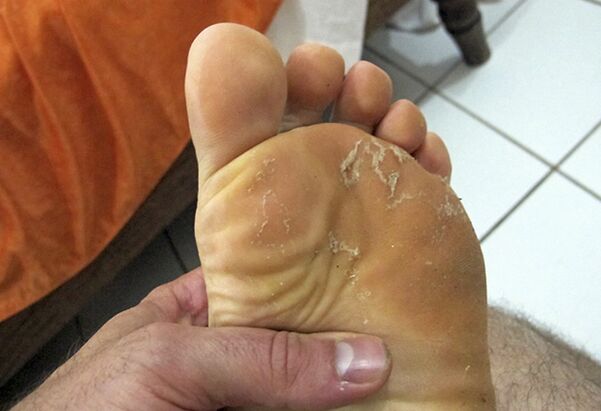
FEAT FUCEGUS is a common disease that belongs to the dermatomy group and develops due to the activation of pathogenic microorganisms.
The causative agents of the fungi live in plants and soil, in the body, in the body of the animals and to maintain their lives, to be in the shoes or clothes of the infected, so that everyone can be infected with fungal infection.
What is the fungus of the foot?
The foot fungus is the disease caused by pathogenic tiny fungi, which is a lesion of the skin of the dialy gaps by further spreading infection in healthy areas of the body.
This pathology can occur at any age, but especially often the disease is diagnosed in the elderly and people with weakened immunity.
About 50 species of mushrooms present in nature are a potential risk.Under the influence of favorable conditions, they are all capable of parasitating in the human body and within it, causing the development of systematic and local fungal pathologies.
Great!
Fungal feet damage causes a change in the structure of the skin and, in the absence of timely treatment, posting the nail plate.
MKB Code 10
According to ICD-10, the Mikoz Stop has code B35.3.
Varieties of fungal diseases on the skin
Experts distinguish several main types of leg fungi depending on the pathogen.Each variety has its own characteristicsAnd proceeds with many unpleasant symptoms.
Rubric
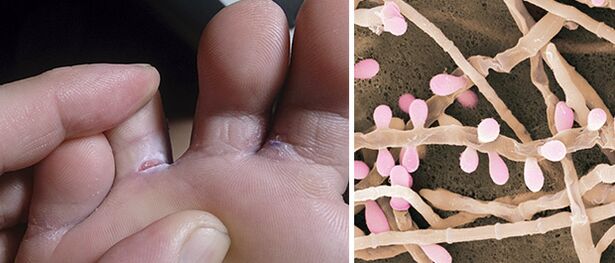
The causative agent isFungus Trikophyte rubrum.The clinical picture of the pathology begins with the fact that the disease covers the feet and folds between the fingers, however, in the process there is an infection through the body from the lymphotogenic spread of foreign protein structures.
Candidiasis of the attitude
Grows due to penetration into the human bodyThe fungus of the genus Candida.Candidiasis of the posture begins with the damage to the spreading spaces and nails.At the same time, the area of the nail cylinder becomes hyperborn and edema, and the patient may be disturbed by pulsating pain in the damage zone and severe itching.
Ovocyry
Damage to nail plates caused by dermatophytes, fungisort of candidate or molds.Fungi are unpretentious in the conditions of existence and are characterized by high resistance to life, so in advanced form the disease is difficult to treat.
Intrigue (intermediate) format
The most typical form of fungus, which is determined by the damage to the spreading folds without the appearance of points of the pathological process in the foot.As the patient develops, cracks, peeling, erythema and wetting occur.In the future, in the context of the disease, any bacterial infection can be developed.
Squamine -herkeratot Form
It is characterized by simultaneous damage to both legs.The disease progresses with severe peeling and keratinization of infected skin areas, as well as with the appearance of deep cracks in the affected areas.Itching is insignificant or absence.
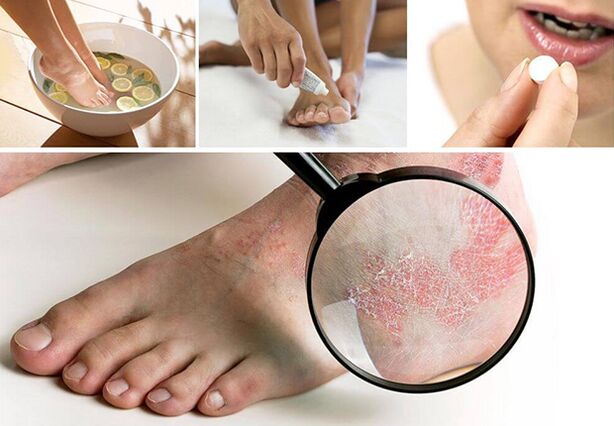
Discomfort
Since infection penetrates the body, many rough surface bubbles appear on the patient's skin, hyperemia and increased swelling, which makes the unhappy form of the disease similar to eczema.After rupture, bubbles form corrosion zonesOn the heel or foot rise.
Deleted form
A variety of fungi has minimal clinical manifestations in the form of indistinct microcreasing in successive aspects of the skin and bowling of the bowl.The patient has no discomfort, so the treatment of pathology is postponed for a long time.
Crazy leg
For a long time, deep fungus, which mainly affects the legs.The disease begins with focal inflammation in subcutaneous tissue and gradually spreads to soft tissues, internal organs and bones.
In the initial stage, the pathology does not manifest, but then a seal with purulent contents and a specific smell is formed at the foot of the contaminated.The surface of the skin is deformed and resembles the turtle shell.
Stages of attitude fungi
The incubation period of attitude is 3-14 days, after which the infected person expresses the first signs of infection.Dermatologists apply patients' attention to the fact that the disease has several stages of growth.
Initial
The patient may not suspect the infection as initialThe fungus stage is regarded as ordinary dry skin.Cracks and redness appear on the leg.There is slight swelling and itching.
Average
In the middle scene, the fungus is recognized without difficulty, as large pink spots appear on the skin, the peeling area increases and itching increases.
Neglected
The fungus affects both the foot with demonstrations and nail plate.Nails become fragile and fragile, start collapsing and sprinkling.The skin is coarse, compressed, covered with deep cracks and is separated by large layers.
Causes and symptoms of fungal damage
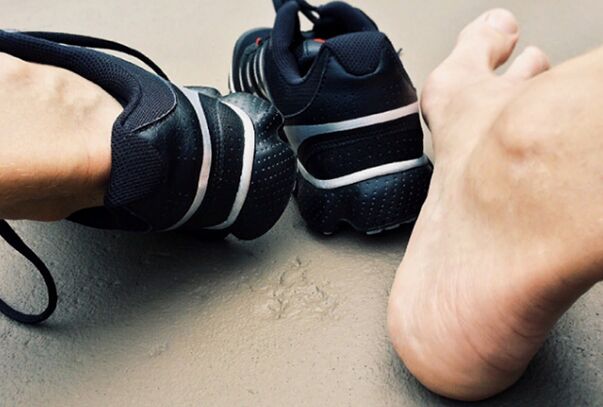
If a person is completely healthy, after direct contact with the source or carrier of infection, his or her personal things or household items, the infection may not occur.However, if there are disorders in the body, there is a high risk of infection.
They become provocative factors:
- weakening of protective functions;
- increased sweating or dry skin.
- Prolonged medication.
- non -compliance with the hygiene rules;
- traffic violation;
- the presence of micro -skinnings on the skin.
- Overweight.
- foot deformation;
- Wearing tight shoes.
Depending on the detection of inflammation and the form of the disease, the fungal infection may be accompanied by the following symptoms:
- Light or severe redness of the skin in damage.
- Itching and burning.
- peeling the skin.
- Changing the color of the nails.
- the appearance of small cracks.
- Loading and thickening the skin of the feet.
- Bubble rashes.
- Unpleasant smell.
Diagnosis
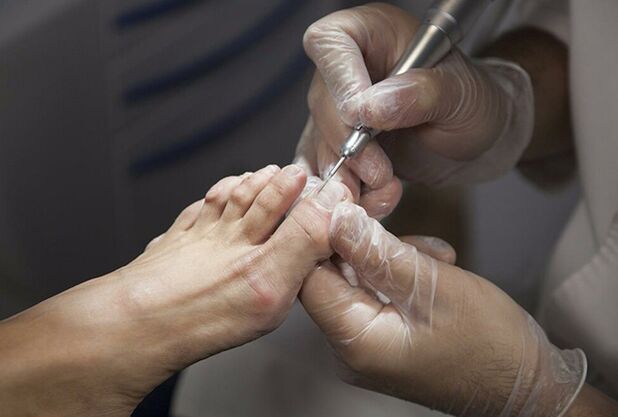
The diagnosis of fungal feet diseases is performed by a mycologist and a dermatologist who should communicate immediately after the onset of one or more symptoms of pathology.
The expert will be able to determine the presence of infection during the initial inspection, but it will not be possible to determine the type of pathogen without additional laboratory tests.
Determination of the fungus type is performed using:
- General and biochemical blood test.
- scraping from the affected area of the skin.
- sowing in collected nutrient material.
- Skin biopsy?
- A special test to confirm the presence of infection in the body.
Based on the results obtainedDoctor diagnoses and prescribe treatmentwith the aim of eliminating fungal infection and symptomatic manifestations of fungus.
General Principles to treat the disease in the foot and fingers (Little Tuk)
The treatment of fungus is performed using effective drugs, which can be prescribed exclusively by the treating physician.Most of the time the patient has been prescribed:
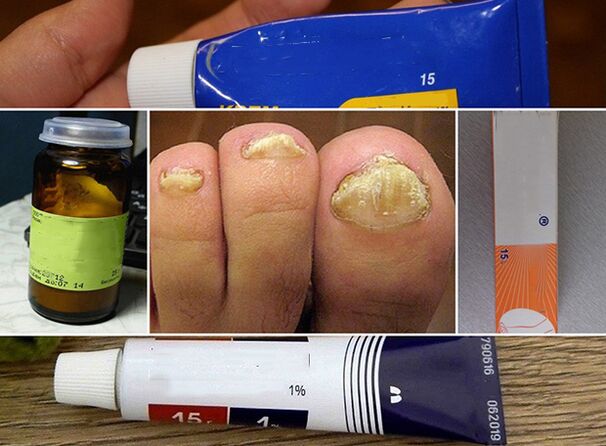
- antifungal agents for indoor and outdoor use.
- Antimicotypes?
- Corticosteroids.
- Antihistamines?
- Multivitamin complexes.
Great!
At the initial stage of the disease, treatment can be performed using alternative medicine prescriptions.Many of them help get rid of the problem quickly, but in some cases they are able to cause an allergic reaction.
How is it dangerous for fungus on the sole?
If, after the diagnosis of fungus, the patient refuses to cure or ignore the symptoms of the disease, his condition will worsen over time and the symptoms will become more severe.Sixth,Lack of treatment threatens complications.Between them:
- the spread of infection in large areas of the skin.
- Hypersensitivity of the body.
- annexation of secondary infection.
- Complications of related diseases.
Great!
Stable physical and aesthetic discomfort can lead to psychological problems.
Can foot fungi go to other parts of the body?
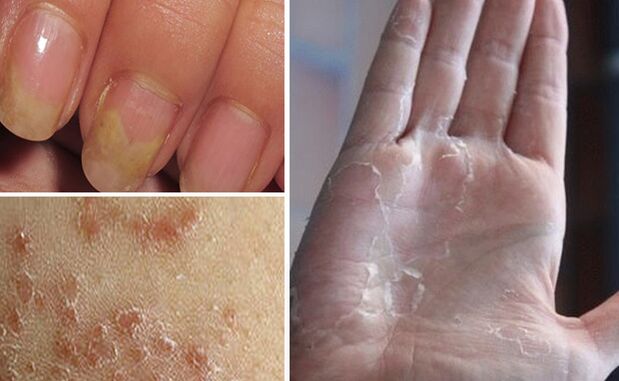
Fungal diseases are not a particular risk to human life, but if personal hygiene rules are not observed, infection can spread to other parts of the body, causing large outbreaks of damage.
The patient may also notice the patient's characteristic symptomatic manifestations in the subsequent stages of the development of the pathological process when they are done on the skinThe rounded rashes from a pink shade are remarkableOr blisters with transparent content.
Prevention of the disease
To avoid fungal infection, it is not enough to exclude any contact with possible sources of fungal infection.In addition, the information is in minimal communication with the carriers of the disease and their personal things, preventive measures should also be addressed to:
- Compliance with personal hygiene.
- treatment of chronic diseases;
- maintaining a healthy lifestyle.
- Enhancing immunity.
The foot fungus creates a risk not only for an infected person but also for his immediate environment, so he discovered the first signs of mycodia, you needTake all possible measures to relievefrom the disease.
To avoid complications, it is important to contact a dermatologist in time for diagnostic measures and prescribe proper treatment using medicines.

























